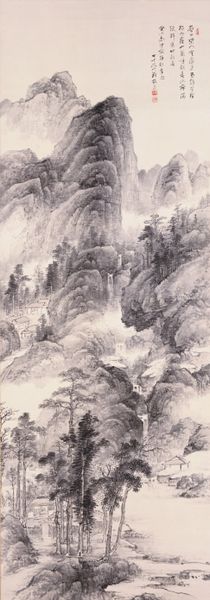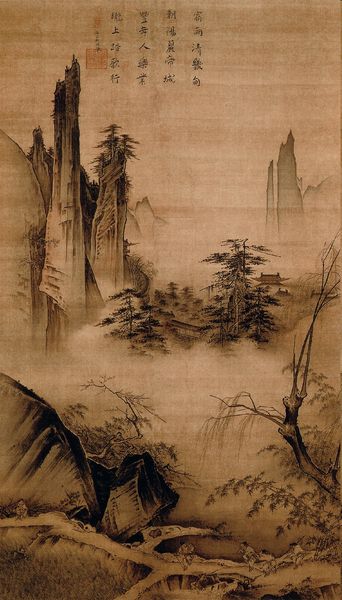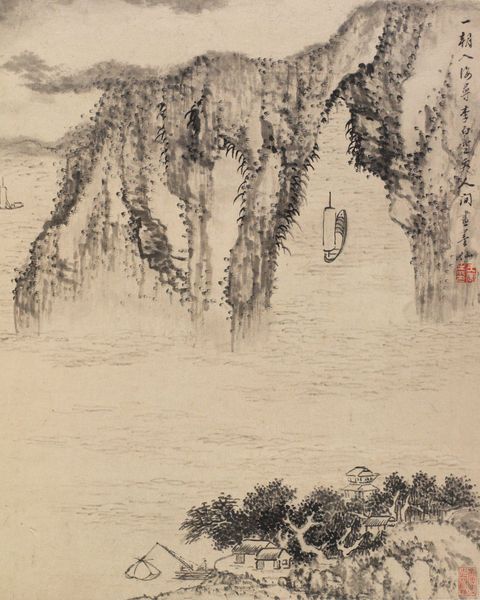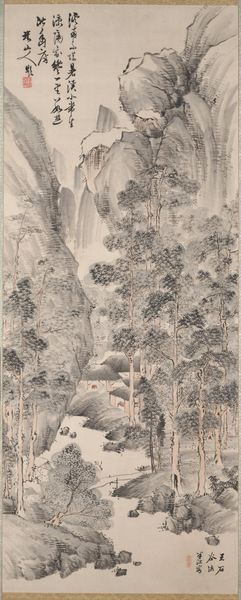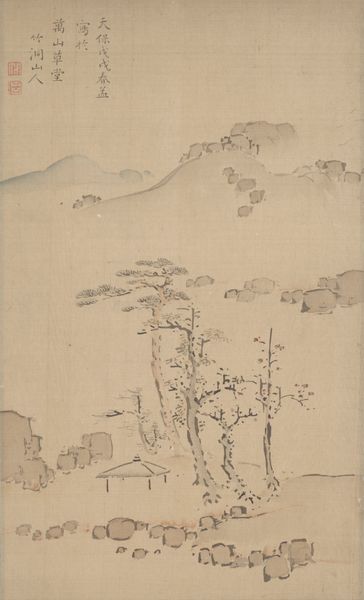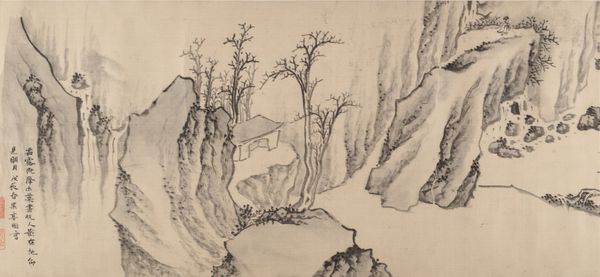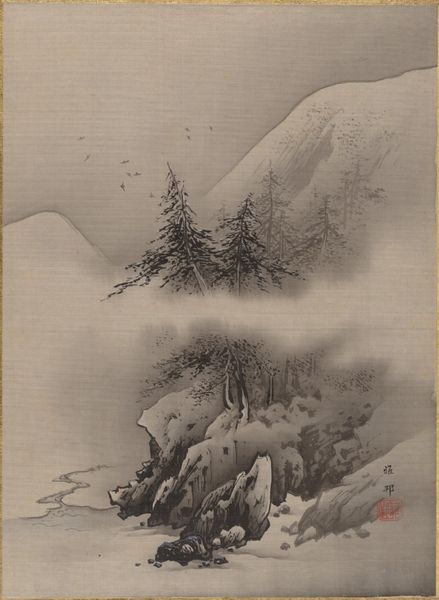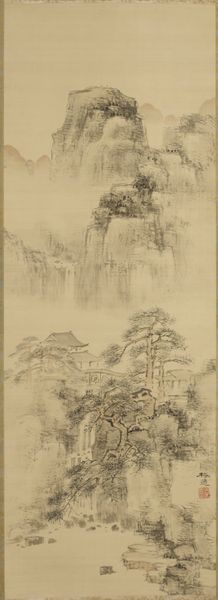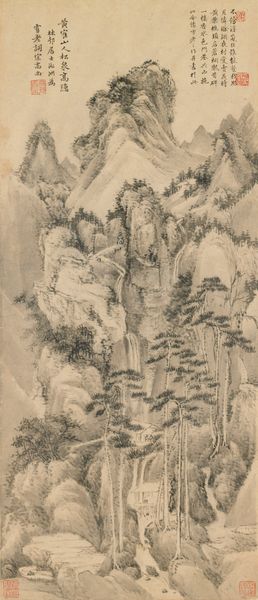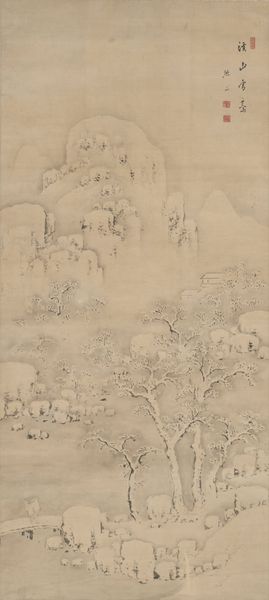
Landscape in the Manner of Dong Yuan c. mid 19th century
0:00
0:00
drawing, hanging-scroll, ink
#
drawing
#
asian-art
#
landscape
#
japan
#
hanging-scroll
#
ink
#
calligraphy
Dimensions: 55 5/8 × 27 7/8 in. (141.29 × 70.8 cm) (image)84 1/2 × 35 1/4 in. (214.63 × 89.54 cm) (mount, without roller)
Copyright: Public Domain
Curator: Standing before us is Nakabayashi Chikutō’s “Landscape in the Manner of Dong Yuan,” an ink drawing mounted as a hanging scroll, dating back to the mid-19th century. It’s quite striking. Editor: It is. My first impression is of stillness and introspection. The muted palette creates a serene, almost dreamlike quality. Curator: Precisely. Nakabayashi was working within the Nanga school of Japanese painting, which emphasized literati ideals and a deep engagement with Chinese art traditions. Referencing Dong Yuan, a master of the Five Dynasties period, speaks to that. It was made during a time of self-reflection and search for Japan's identity when foreign influence had grown tremendously. Editor: The waterfall near the houses really speaks to me, like a visual metaphor. The water represents continuity and constant change. Do you agree? Curator: Certainly. The scholar-artist often imbued landscape with symbolism. Water, mountains, trees each had established meanings within the visual language of the time. Beyond personal emotions, one may also consider an underlying desire to explore national identity. By making "shan shui", which means mountains and water, these types of cultural landscapes came to the forefront for people of high social status, thus also setting precedents for commoners. Editor: The human figures feel so small against the grandeur of the mountains, an impression that amplifies my sense of their journey in seeking deeper understanding of this landscape and nature overall. Is that characteristic of this style? Curator: Definitely. Look at how they are drawn in, too, their robes are so similar to the waterfall's streams! By creating that similarity, the mountain becomes one and one with the traveler in the mountain; therefore the artwork not only illustrates literati's past but can also inform its present. The landscape isn't merely background but carries meaning and significance to them. Editor: It's fascinating how tradition and personal expression intertwine here, but that’s common with all painting during the 1800s. The literati, with its blending of aesthetic tastes with their interpretation of self-hood, sought to capture their unique sensibility for nature. Curator: Ultimately, “Landscape in the Manner of Dong Yuan” encapsulates a deep longing for past greatness, a connection to nature, and a personal journey expressed through a well-established visual language. Editor: A journey that still resonates deeply with viewers today, inviting reflection on our place within both history and the natural world.
Comments
minneapolisinstituteofart almost 2 years ago
⋮
Nanga artists were painters who admired Chinese literati paintings and studied them through both printed painting manuals and imported artworks, as they were prohibited from traveling to China. Nakabayashi Chikutō was a fourth generation nanga artist. He had many opportunities to study and copy Chinese painting at first hand through his connections to Kamiya Ten’yū (1710-1801), a wealthy merchant and collector of antique Japanese and Chinese painting. Chikutō’s studies allowed his own paintings to approach the original style of the Chinese masters like Dong Yuan (932-962). In this painting, Chikutō takes on the classic motif of a scholar walking in nature followed by his attendant. Chikutō seems to suggest that the scholar is on the way to the little hut that is high up in the mountains, an ideal place to contemplate and enjoy the waterfall.
Join the conversation
Join millions of artists and users on Artera today and experience the ultimate creative platform.
